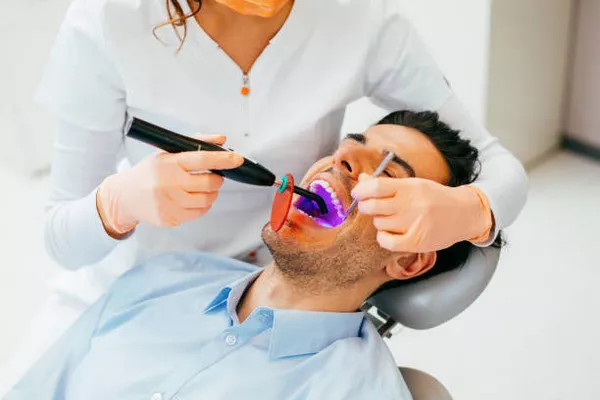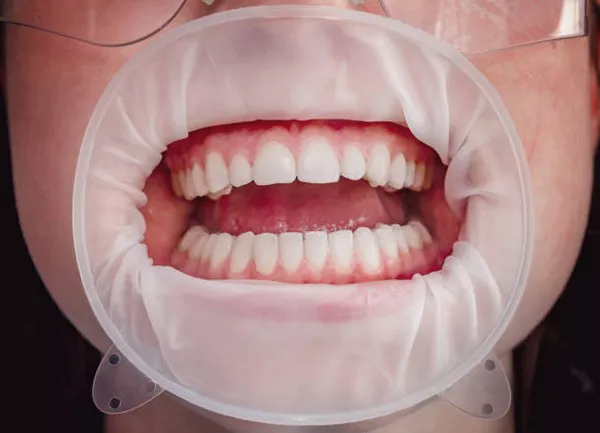Gingivitis is a prevalent yet often overlooked gum disease that can lead to severe dental issues if not addressed promptly. Understanding what gingivitis entails, its symptoms, and the cleaning process can help alleviate fears and encourage timely treatment. This article provides a comprehensive look at gingivitis, the professional cleaning procedure, pain and discomfort expectations, post-cleaning care, prevention strategies, and the importance of seeking dental care.
Explanation of Gingivitis
Gingivitis is the earliest stage of gum disease, characterized by inflammation of the gums. It is caused primarily by the buildup of plaque—a sticky film of bacteria that forms on teeth. Plaque that remains on the teeth and gums can harden into tartar, further irritating the gums and leading to gingivitis. Contributing factors to gingivitis include poor oral hygiene, smoking, diabetes, certain medications, and hormonal changes.
If left untreated, gingivitis can progress to periodontitis, a more severe form of gum disease that can result in tooth loss and damage to the jawbone. However, gingivitis is reversible with proper dental care and good oral hygiene practices.
see also: Why are my teeth half white half yellow?
Symptoms of Gingivitis
Recognizing the symptoms of gingivitis is crucial for early intervention. Common signs include:
Redness of the Gums: Healthy gums are typically pink. Red or dark red gums can indicate inflammation.
Swelling: Inflamed gums may appear swollen or puffy.
Bleeding Gums: Gums that bleed easily, especially during brushing or flossing, are a common symptom.
Bad Breath: Persistent bad breath (halitosis) can be a sign of gum disease.
Tenderness: Gums may feel tender or painful to the touch.
These symptoms should prompt a visit to the dentist for a thorough examination and cleaning.
Gingivitis Cleaning Procedure
The professional cleaning procedure to treat gingivitis is known as scaling and root planing. This deep cleaning process involves two main steps:
Scaling: Scaling removes plaque and tartar from the surfaces of the teeth and below the gum line. Dental professionals use special tools to carefully scrape away these deposits, preventing further irritation and inflammation of the gums.
Root Planing: This process smooths the tooth roots, helping the gums reattach to the teeth. Smoother roots reduce the likelihood of bacteria adhering to the surfaces, promoting healthier gums.
The procedure can be performed using manual instruments, ultrasonic devices, or a combination of both. The choice of tools depends on the extent of plaque and tartar buildup and the patient’s comfort level.
Pain and Discomfort
A common concern about gingivitis cleaning is the potential pain and discomfort. The level of discomfort experienced during and after the procedure varies among individuals and depends on factors such as the severity of the gingivitis and personal pain tolerance.
During the Procedure: Dental professionals typically use local anesthesia to numb the treatment area, minimizing pain during the cleaning. Patients may feel some pressure or mild discomfort as the plaque and tartar are removed, but the anesthesia generally prevents significant pain.
After the Procedure: Post-procedure, it is normal to experience some sensitivity and discomfort, especially if extensive scaling and root planing were required. The gums may be tender and slightly swollen. Over-the-counter pain relievers like ibuprofen can help manage this discomfort. Using a soft-bristled toothbrush and avoiding hard or crunchy foods can also ease irritation during the healing process.
Post-Cleaning Care
Proper post-cleaning care is essential for ensuring successful treatment and preventing the recurrence of gingivitis. Here are some tips for managing sensitivity and promoting healing:
Managing Sensitivity and Swelling: To reduce gum sensitivity and swelling, rinse your mouth with warm salt water several times a day. This solution can soothe the gums and help with inflammation. Avoid eating foods that are too hot, cold, spicy, or acidic, as these can exacerbate sensitivity.
Oral Hygiene Practices: Continue brushing and flossing regularly, but do so gently to avoid irritating the gums. Using toothpaste for sensitive teeth can help alleviate discomfort. Consider using an antiseptic mouthwash to reduce bacteria and promote healing.
Follow-Up Appointments: Attend any scheduled follow-up appointments with your dentist. These visits allow the dentist to monitor your healing progress and ensure that gingivitis does not return.
Prevention
Preventing gingivitis is easier than treating it. By adopting good oral hygiene practices and regular dental checkups, you can maintain healthy gums and prevent the onset of gingivitis.
Regular Dental Checkups: Visit your dentist at least twice a year for professional cleanings and examinations. Regular checkups can detect early signs of gingivitis and other dental issues before they become severe.
Proper Brushing and Flossing: Brush your teeth at least twice a day with fluoride toothpaste. Floss daily to remove plaque and food particles from between your teeth and along the gum line. Proper technique is crucial, so ask your dentist for a demonstration if you’re unsure.
Healthy Diet: A balanced diet supports overall oral health. Limit sugary and starchy foods, as these can contribute to plaque buildup. Incorporate foods rich in vitamins and minerals, such as fruits, vegetables, and dairy products, to strengthen your teeth and gums.
Quit Smoking: Smoking is a significant risk factor for gum disease. Quitting smoking can improve your oral health and reduce the risk of gingivitis and other dental problems.
see also: Why are my teeth more yellow near the gums?
When to See a Dentist
If you notice any symptoms of gingivitis, such as redness, swelling, or bleeding gums, schedule an appointment with your dentist promptly. Early diagnosis and treatment are crucial for reversing gingivitis and preventing more severe gum disease.
Recovery and Healing
With proper care, your gums will start to heal and reattach to the roots of the teeth within a week after the deep cleaning. Here’s what you can expect during the recovery period:
Healing Process: Initially, your gums may be tender and slightly swollen. As they heal, the inflammation will reduce, and the gums will become firmer and more resilient. It’s essential to maintain good oral hygiene during this time to support the healing process.
Follow-Up Care: Your dentist may recommend additional follow-up visits to ensure your gums are healing correctly. These visits provide an opportunity to address any concerns and adjust your treatment plan if necessary.
Long-Term Maintenance: Preventing the recurrence of gingivitis requires ongoing commitment to oral hygiene. Regular brushing, flossing, and dental checkups are vital for maintaining healthy gums and preventing future issues.
Conclusion
Gingivitis is a common and mild form of gum disease that can lead to more serious conditions if left untreated. Understanding the symptoms and undergoing professional cleaning procedures like scaling and root planing are essential steps in treating gingivitis. While the procedure may cause mild to moderate discomfort, it is generally well-managed with local anesthesia and post-procedure care.
Proper oral hygiene practices, regular dental checkups, and healthy lifestyle choices play crucial roles in preventing gingivitis and maintaining overall oral health. If you experience any symptoms of gingivitis, such as redness, swelling, or bleeding gums, don’t hesitate to schedule an appointment with your dentist for a proper diagnosis and treatment plan.
With timely intervention and consistent care, gingivitis can be effectively managed, ensuring a healthy and confident smile.
FAQs About Gingivitis Cleaning
1. Is gingivitis cleaning painful?
Gingivitis cleaning, also known as scaling and root planing, can cause some discomfort, but the level of pain varies from person to person. The procedure involves removing plaque and tartar buildup from below the gum line, which can irritate inflamed gums. Patients with severe gingivitis may experience more discomfort due to their already sensitive gums. However, most people find the procedure manageable, and any discomfort is usually temporary.
2. Do they numb you for gingivitis cleaning?
Yes, dentists or dental hygienists often use local anesthesia to numb the gums and surrounding areas before performing gingivitis cleaning. This helps minimize discomfort during the procedure. The type and amount of anesthesia used depend on the severity of the gingivitis and the patient’s pain tolerance. If you are concerned about pain, discuss anesthesia options with your dentist to ensure a more comfortable experience.
3. How long does a gingivitis cleaning take?
The duration of a gingivitis cleaning depends on the severity of the condition and the extent of plaque and tartar buildup. On average, a scaling and root planing session can take between 1 to 2 hours. In cases of severe gingivitis, multiple visits may be necessary to thoroughly clean all affected areas. Your dentist will provide a more accurate estimate based on your specific situation and the necessary treatment plan.
You Might Be Interested In































